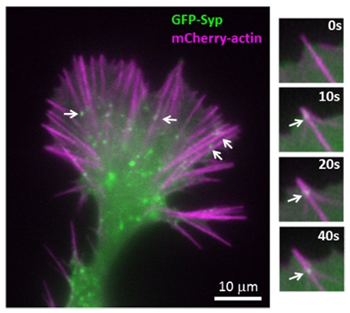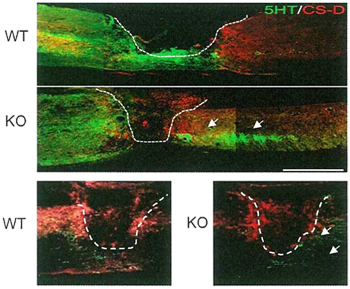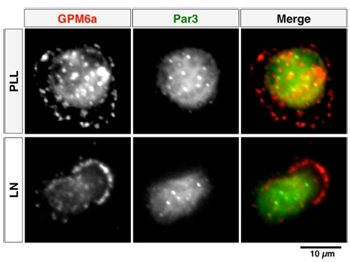1.Research Summary
In the field of neurochemistry, members in our department (Department of Neurochemistry and Molecular Cell Biology) are studying the principles of three significant events in neuroscience: “formation of the brain (how the neural network is formed),” “expression of brain functions (how the neural network acts),” and “repair of the brain damage (whether the neural network can be regenerated)” based on the interactions among proteins. We are studying the molecular principles common to non-nervous systems from the aspects of vesicular traffic, the cytoskeletal rearrangement, and protein phosphorylation.
2.Research Subjects
A. Analysis of the growth cone functions based on the novel molecular pathways
1) Identification of the protein phosphorylation crucial to the growth
cone behavior, revealed by phosphoproteomics
2) Visualization of the vesicular trafficking associated with the growth
cone functions
3) Analysis of new signaling pathways in the neuronal polarization
B. Analysis of the mice lacking in the key enzymes for chondroitin sulfate (CS) synthesis
1) Roles of perineuronal nets (PNN) for the synaptic plasticity from the
molecular aspects
2) The significance of CS for nerve growth and development
3) CS Functions in multi-organs and pathogenesis of the human diseases
as a mouse model
3.Research Results
[Area] Growth cone
[Research subject]
Visualization of the vesicular trafficking associated with the growth cone functions
[Description]
There are many vesicles in the growth cone, however, their roles in nerve
growth are not known. We have found the vesicular proteins revealed by
proteomics, and succeeded in analyzing their behaviors by superresolutional
imaging. Namely, we have discovered the novel interactions between vesicles
and dynamics of F-actins, indicating that there is a coordination mechanism
between the membrane and the cytoskeleton for nerve growth.
[Photographs]

[Area] Chondroitin sulfate
[Research subject]
Efficient repair mechanism of spinal code injury
[Description]
Chondroitin sulfate (CS) is the most abundant inhibitory molecule in the
growth cone and in nerve growth/axon regeneration. We produced CSGalNAcT1
(the key enzyme for CS synthesis)-KO mice, and these mice showed remarkable
recovery from spinal cord injury. We have discovered the mechanism that
optimizes the synthetic balance of glycosaminoglycans for axon regeneration.
[Photographs]

Increased regenerating axons in CSGalNAcT1-KO
[Area] Growth cone
[Research subject]
Analysis of new signaling pathways in the neuronal polarization
[Description]
We revealed by proteomics that GPM6a is a membrane protein enriched in
the growth cone. The physiological role of this protein is not known. We
have recently demonstrated that GPM6a accelerates the neuronal polarization
in response to the extracellular signals such as laminin. We have also
determined the downstream signaling pathways of GPM6a at a rapid polarization.
[Photographs]

The polarized distribution of GPM6a in the neuron cultured on laminin (LN)
